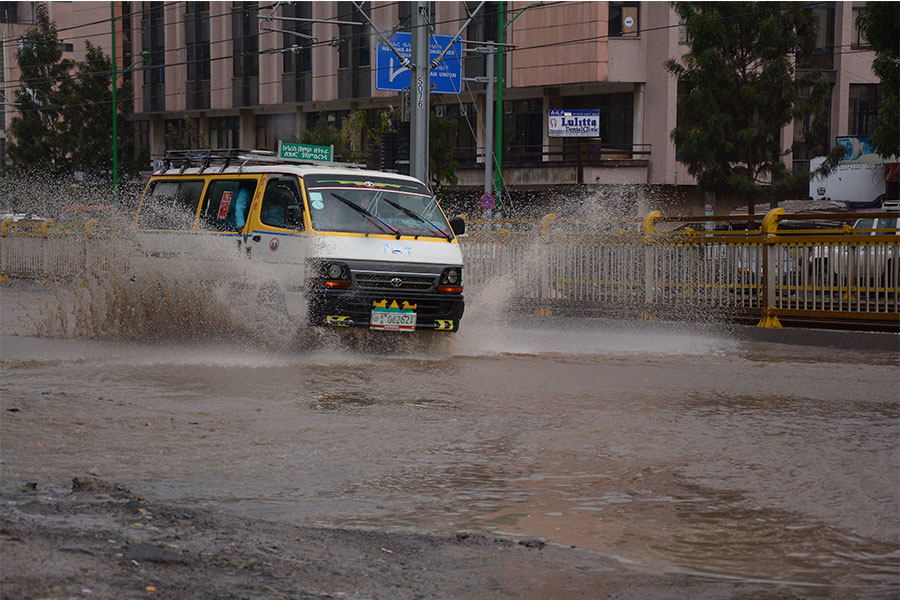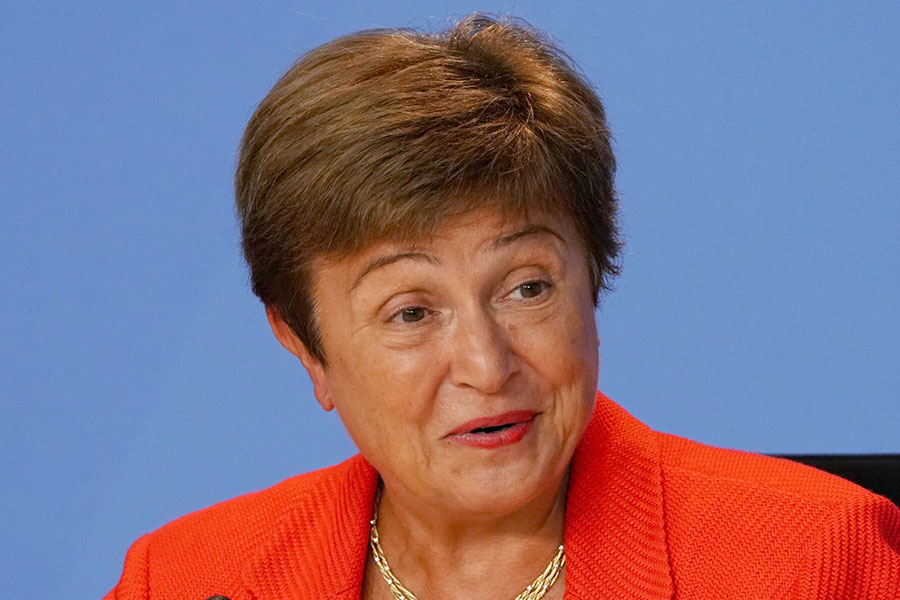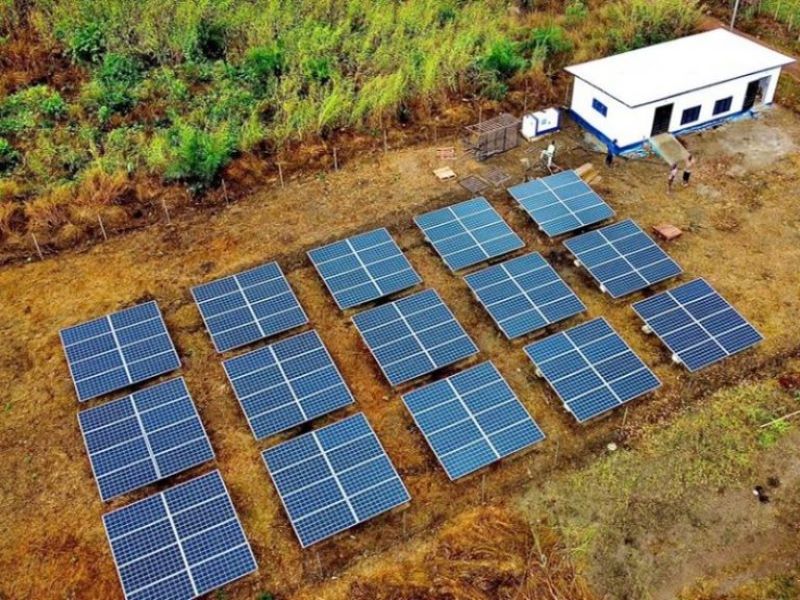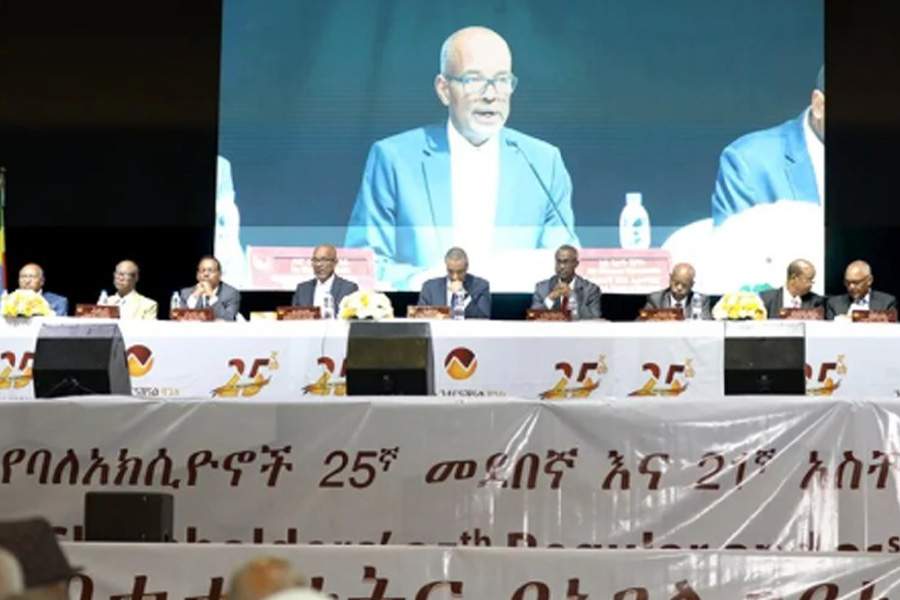
Radar | Oct 12,2025
Sep 1 , 2024.
Addis Abeba's skyline is being dramatically altered. Once characterised by unremarkable buildings and dusty roads, Africa's political and diplomatic capital now greets visitors with a spectacle of affluence, glitz, and shimmering lights. As night falls, the city's main avenues and boulevards dazzle with an almost theatrical brightness, leaving a lasting impression on those who pass through.
The transformation is no accident. It results from a deliberate and sustained effort by Prime Minister Abiy Ahmed's (PhD) administration, which appears to be intent on ensuring that first impressions are lasting.
Yet, beneath this veneer of prosperity and progress lies a different narrative, one told by the disgruntled voices of the city’s residents. They question the speed and manner in which these changes are imposed. Their concern is the urban corridor development project, a flagship initiative of the current administration, that has now entered its second phase, incorporating five additional districts of the capital. The city administration is prepared to spend over 40 billion Br on this venture, expecting to generate close to 99 billion Br from leasing 1.4 million square meters of plots. The plan also includes garnering 5.7 billion Br annually in taxes from businesses that will presumably thrive in these newly developed urban settings.
However, the scale of this project is immense, and thousands of residents are bound to be impacted by these expansions. Unsurprisingly, many fear their voices will be disregarded and their plights dismissed as mere obstacles in transforming the city into a modern metropolis. As in many other countries, the debate over urban development is often polarised. Critics of such projects are frequently labelled as "anti-development," while proponents of these grand undertakings are heralded as "pro-development." The binary framing does little to address the complexities of urban growth.
Indeed, the paradox of corridor development is not unique to Addis Abeba. It is a global phenomenon that poses a conundrum at the heart of urban development: the urban corridor paradox.
This paradox pits rapid urban growth against the persistent infrastructural gaps that cities face. On the one hand, cities boast enviable economic growth, often outpacing national averages due to their vibrant business environments. On the other, this growth frequently exposes weaknesses in infrastructure, from clogged roads to insufficient housing and utilities. The paradox lies in that while urban corridors are engines of economic dynamism, they are also vulnerable to the pressures of rapid population growth and environmental degradation.
This paradox is evident in cities around the world, where skyscrapers rise even as essential services falter.
Take the High Line in New York City, a project which transformed an old freight rail line into a lush, elevated park. The project not only revitalised Manhattan's West Side but also manifested the power of community engagement and sustainable design. The High Line has attracted millions of visitors annually, boosting local businesses and property values, while illustrating the potential of repurposing urban spaces to balance growth with environmental consciousness.
Boston's Green Line Extension is yet another case. It remains an ongoing project to extend the Green Line through important counties, including Cambridge, enhancing accessibility and reducing congestion. More importantly, proactive community engagement has shaped the project, ensuring it meets the needs of the people it serves.
China’s Pearl River Delta, another example, offers lessons in strategic foresight. The high-speed rail line connecting three major cities in this region has reduced travel times and promoted economic integration. It demonstrated how intercity connectivity can effectively manage urban growth, providing a blueprint for other regions facing similar constraints.
Not all projects, however, have been successful. Masdar City in the United Arab Emirates (UAE) represents an ambitious vision of sustainable and low-carbon urban development. Despite its promise, the project has faced criticism for its slow progress and high costs, demonstrating the limitations of balancing futuristic ambitions with practical execution.
Even more telling are the failures that serve as cautionary tales. Neglecting infrastructure in favour of unchecked growth can lead to dire consequences, as seen in poorly planned developments that result in traffic congestion, environmental degradation, and social inequality.
Ethiopia's experience with large-scale projects offers no shortage of examples where ambition outpaced execution. The country has embarked on a development path that is as precarious as it is ambitious. The country, which has seen remarkable economic growth over the past two decades, is now at a crossroads. Leaders have launched a series of grand public projects that promise to transform the country, yet these initiatives raise serious questions about feasibility, value for money, and their social, economic, and environmental impact.
The extensive network of industrial parks, railways, and highways has been designed to propel Ethiopia into the ranks of middle-income countries, creating jobs, boosting exports, and reducing poverty. Yet the economic strain of servicing the debt tied to these projects is substantial. Public debt has ballooned, driven mainly by loans secured for these infrastructure initiatives, as external debt, which was 10.5pc of gross national income in 2008, surged to nearly 17.5pc by June 2023.
The Revolutionary Democrats' promise of economic transformation through industrialisation has not materialised as expected. Manufacturing’s share of GDP remains low, and the hoped-for influx of foreign direct investment (FDI) has been slower under the Prosperitians than in the years before their ascent to power.
However lacking, neither can the social impact of these projects be overlooked.
In the rush to modernise, successive administrations have often sidelined the concerns of those directly impacted. The displacement of communities to make way for large-scale developments has been a recurring nightmare for those affected. Thousands of families have been displaced, often with inadequate compensation and insufficient measures to ensure their livelihoods post-relocation. This has not only led to social unrest that propelled the Prosperitians to the helm of political power, but it has also strained the fabric of Ethiopia's society.
Environmental considerations have also been given short shrift in the planning and execution of these projects. The construction of dams, roads, and industrial zones has led to ecological disruption, often criticised for their consequential impacts, particularly in regions where environmental regulations are weak or poorly enforced. The long-term costs of these environmental impacts, both in biodiversity loss and the health of local populations, are yet to be fully accounted for.
Governance issues further complicate Ethiopia's development trajectory. The rapid pace of development has often outstripped the capacity of institutions to manage these projects transparently and effectively. Corruption, mismanagement, and a lack of accountability have plagued several initiatives.
The case of MeTEC, a military-industrial conglomerate involved in numerous public projects, was illustrative of this concern. It was embroiled in mismanagement and corruption scandals, which led to its top officials' eventual dismissal, arrest, and prosecution. MeTEC was an episode of the dangers of concentrating too much power in unaccountable entities and the need for more vigorous institutional checks and balances.
These are lessons for Ethiopia’s leaders to pose and recalibrate development aspirations to ensure that ambition does not outpace capacity. It begins with a more rigorous approach to project planning, including comprehensive feasibility studies, cost-benefit analyses, and environmental impact assessments. These processes should not be mere formalities but integral to decision-making, ensuring that projects are viable and beneficial in the long term. There needs to be a stronger emphasis on social and environmental safeguards.
Development should not come at the expense of the most vulnerable. Displaced communities should be adequately compensated and supported, and decisions affecting them should be enforced through inclusive engagements and due process when disputes occur. The authorities could do well if they work to strengthen constitutional institutions to ensure transparency, accountability, and governance. Corruption and mismanagement must be rooted out, and public projects should be subject to independent oversight to guarantee they deliver value for money.
It is worth remembering that the path to sustainable development does not involve shortcuts or disregard for the broader consequences of growth. By embracing a more measured and inclusive approach, the authorities can still achieve their goals without infringing on citizens' rights and sacrificing their well-being.
PUBLISHED ON
Sep 01,2024 [ VOL
25 , NO
1270]

Radar | Oct 12,2025

Fortune News | Dec 23,2023

View From Arada | Apr 26,2019

Verbatim | Jul 17,2022

Radar | Jun 22,2024

Radar | Nov 21,2018

Radar | Dec 01,2024

Radar | Jan 16,2024

Agenda | Nov 16,2024

Fortune News | Dec 01,2024

Photo Gallery | 177540 Views | May 06,2019

Photo Gallery | 167747 Views | Apr 26,2019

Photo Gallery | 158414 Views | Oct 06,2021

My Opinion | 136988 Views | Aug 14,2021

Dec 22 , 2024 . By TIZITA SHEWAFERAW
Charged with transforming colossal state-owned enterprises into modern and competitiv...

Aug 18 , 2024 . By AKSAH ITALO
Although predictable Yonas Zerihun's job in the ride-hailing service is not immune to...

Jul 28 , 2024 . By TIZITA SHEWAFERAW
Unhabitual, perhaps too many, Samuel Gebreyohannes, 38, used to occasionally enjoy a couple of beers at breakfast. However, he recently swit...

Jul 13 , 2024 . By AKSAH ITALO
Investors who rely on tractors, trucks, and field vehicles for commuting, transporting commodities, and f...

Oct 25 , 2025 . By YITBAREK GETACHEW
Officials of the Addis Abeba's Education Bureau have embarked on an ambitious experim...

Oct 26 , 2025 . By YITBAREK GETACHEW
The federal government is making a landmark shift in its investment incentive regime...

Oct 26 , 2025 . By NAHOM AYELE
The National Bank of Ethiopia (NBE) is preparing to issue a directive that will funda...

Oct 26 , 2025 . By SURAFEL MULUGETA
A community of booksellers shadowing the Ethiopian National Theatre has been jolted b...